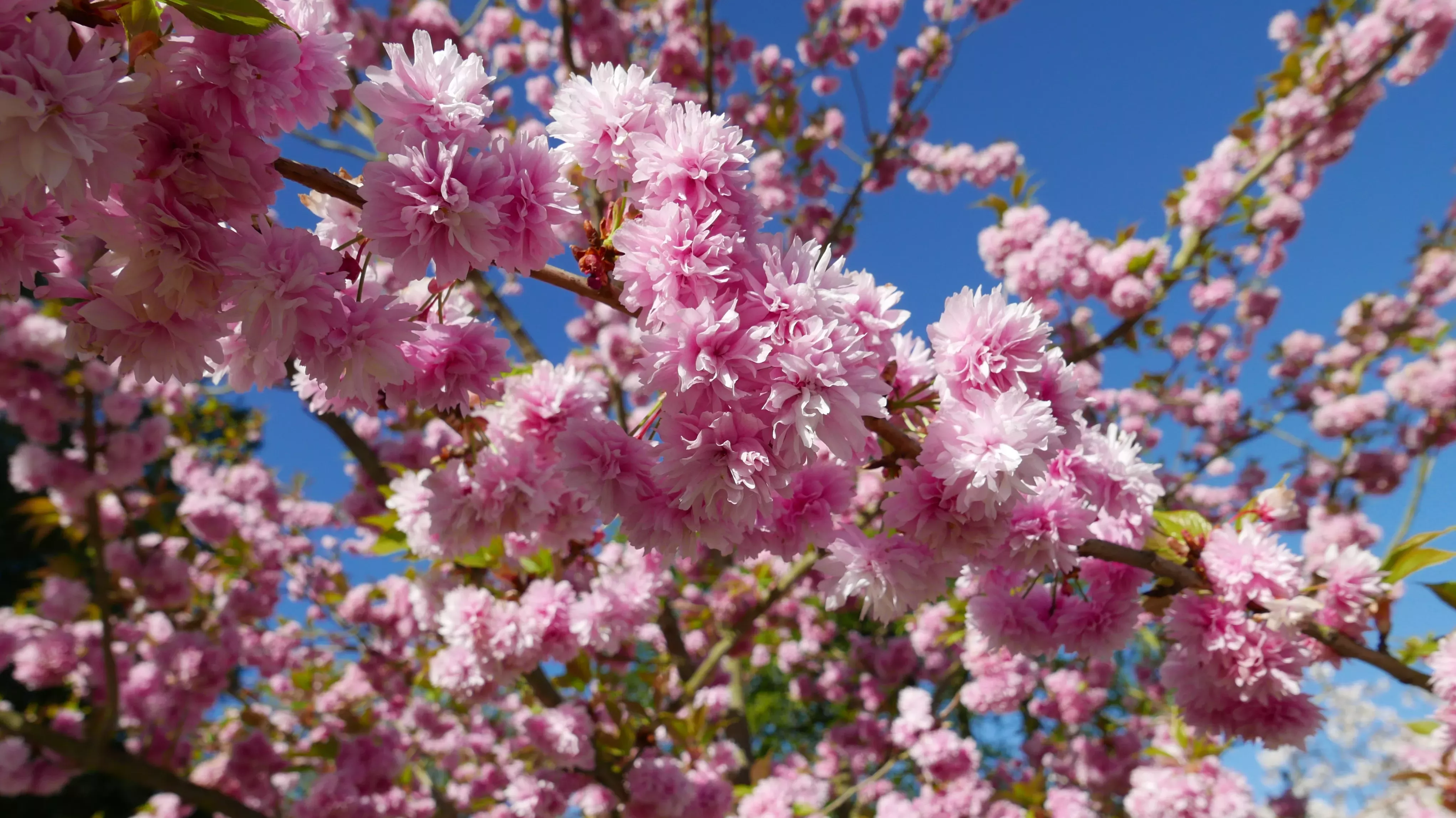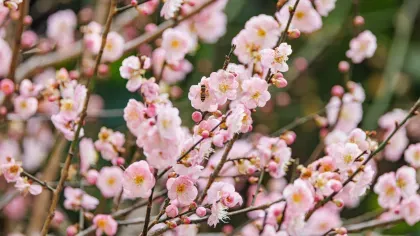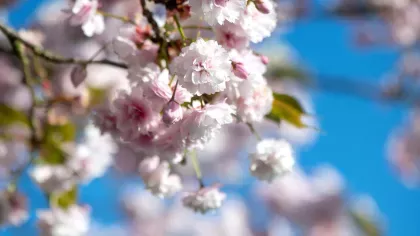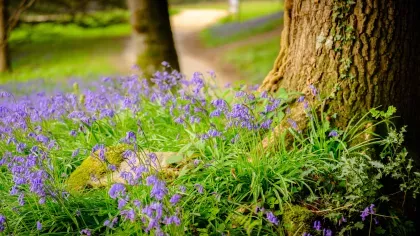11 April 2024
Top 5 blooms to spot in our gardens
Find out more about the UK's favourite spring flowers and where to spot them at Kew Gardens and Wakehurst.

Colourful blooms are popping up all around us, a sure sign that spring is here.
Find out more about your favourite spring flowers, how to identify them and where to spot them at Kew Gardens and Wakehurst.
Be inspired by original music from the Royal College of Music under the blossoms at Kew this spring at Sounds of Blossom.
1. Cherry blossom
Displays of white and pink cherry blossom have become synonymous with spring.
In Japan, thousands of people gather at cherry blossom festivals to admire the show of colour, in a tradition called hanami (flower viewing).
They are considered the national flower of Japan. They symbolise life, hope, and good health.
At Kew, see the best displays on Cherry Walk, running from the Rose Garden behind the Palm House to the Mediterranean Garden.
The best time to see them is in April and May, but be aware the weather and the effects of climate change can impact when they bloom.
At Sounds of Blossom this spring, you can walk under the cherry blossoms listening to original compositions from students at the Royal College of Music inspired by the beauty of the season.


2. Bluebells
Bluebells are best known for creating a dazzling carpet of blue in woodland areas.
The bluebell is actually a herb that grows from a bulb. The bell-shaped flowers are a favourite with bees and butterflies which feed on the rich nectar.
Over half of the world's population of bluebells grow in the UK. Our 300 year old woodland in the Natural Area at Kew is home to one of London's best bluebell woods.
A visit to Bethlehem Wood when bluebells are in bloom is another must-see – it's arguably the most spectacular spring sight at Wakehurst.
The flowers usually bloom between April and May. See what birds and wildlife you can spot while you wander beneath the trees.

3. Tulip
Tulips (Tulipa) are part of the lily family (Liliaceae). Look out for their star-shaped flowers and long pointed leaves.
Although they are often thought to come from the Netherlands, many tulip species originate from Central Asia where they grew wild.
They were first cultivated in Turkey and became popular there in the 16th century. They were a favourite flower in the opulent gardens of Ottoman sultans.
The beauty of these flowers sparked interest in 17th century Europe, where demand skyrocketed as everyone wanted the fashionable flowers for their gardens.
In the Dutch republic, tulips became an expensive luxury item where they were traded for huge sums of money. At one point, they cost more than diamonds and houses.
The market eventually suffered a huge collapse and was one of the first examples of an economic boom and crash.
Although they're no longer more expensive than diamonds, tulips are still highly prized by gardeners for their striking variety of colours and shapes.
Most tulips bloom in April and May. Look out for our dazzling displays on the Broad Walk Borders and in the Palm House beds at Kew.

4. Magnolia
Magnolias range in size, from small shrubs to large trees. They are well known for their stunning star-like flowers, ranging from pure white to deep pink.
They are slow-growing and can take up to 20 years to reach full size. Depending on the variety, flowers can appear between February and June.
At Kew, you can see mass flowering near the Orangery and in the Aboretum. Look out for the Magnolia campbellii, or 'pink tulip tree', which is one of the first magnolia trees to bloom in the Gardens between February and March.
An array of magnolias can be found in the Water Gardens at Wakehurst.


5. Primrose
Primrose (Primula vulgaris) are a small woodland plant and one of the first signs of spring in wooded areas. It's thought this is where their name comes from, as 'primus' means 'first' or 'early'.
They flower as early as December and as late as May. Look out for their pale yellow flowers and notched petals.
In Irish folklore, these pretty flowers were thought to represent eternal love and were placed at the doorway to protect the home from fairies.
See primrose and other woodland highlights in our Woodland Garden and the Natural Area at Kew. You can also spot them in Bethlehem Wood at Wakehurst before our wild bluebells come into bloom.




